riskless arbitrage
description: a form of arbitrage that involves no risk, typically exploiting price differences of the same asset in different markets.
15 results
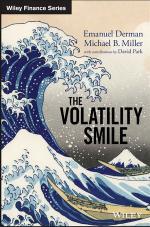
The Volatility Smile
by
Emanuel Derman,Michael B.Miller
Published 6 Sep 2016
First, one has to be very careful in modeling the stochastic evolution of implied volatility directly, because changing implied volatility changes all option prices, and it is difficult to avoid violating the constraints imposed by the principle of no riskless arbitrage. Second, one must not forget the awkward fact that implied volatility is a parameter of the BSM model itself, which fails to describe option values correctly, and that we are therefore trying, perhaps illogically, to model the parameter of an inaccurate model. For readers familiar with interest rate modeling, this approach is analogous to the Heath-Jarrow-Morton model in which the entire yield curve is allowed to become stochastic while still respecting the no-riskless-arbitrage constraints on bond prices. It is possible to develop implied volatility models in the same spirit, but they are complicated and computationally difficult.
…
We may have to settle for a replicating portfolio that is approximately the same in most scenarios. What both of the aforementioned formulations hint at is the impossibility of arbitrage, the ability to trade in such a way that will guarantee a profit without any risk. Another version of the law of one price is therefore the principle of no riskless arbitrage, which can be stated as follows: It should be impossible to obtain for zero cost a security that has nonnegative payoffs in all future scenarios, with at least one scenario having a positive payoff. This principle states that markets abhor an arbitrage opportunity. It is equivalent to the law of one price in that, if two securities were to have identical future payoffs but different current prices, a suitably weighted long position in the cheaper security and a short position in the more expensive one would create an arbitrage opportunity.
…
It is equivalent to the law of one price in that, if two securities were to have identical future payoffs but different current prices, a suitably weighted long position in the cheaper security and a short position in the more expensive one would create an arbitrage opportunity. Given enough time and enough information, market participants will end up enforcing the law of one price and the principle of no riskless arbitrage as they seek to quickly profit by buying securities that are too cheap and selling securities that are too expensive, thereby eliminating arbitrage The Principle of Replication 15 opportunities. In the long run, in liquid markets, the law of one price usually holds. But the law of one price is not a law of nature.
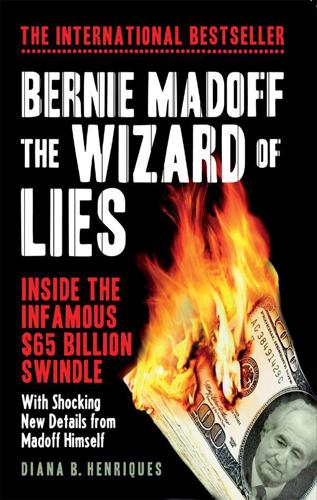
Bernie Madoff, the Wizard of Lies: Inside the Infamous $65 Billion Swindle
by
Diana B. Henriques
Published 1 Aug 2011
In his prison interviews and in subsequent letters, Madoff claimed that he was generating those solid, consistent profits for his father-in-law’s partnership accounts through an investment strategy that he said was his small firm’s specialty in the 1970s. It was called riskless arbitrage, and it was widely understood and accepted among the professionals on Wall Street in that era. Riskless arbitrage is an age-old strategy for exploiting momentary price differences for the same product in different markets. It could be as simple as ordering cartons of cigarettes by telephone from a vendor in a low-cost state and simultaneously selling them over the phone at a higher price in states where they are more expensive, thereby locking in a profit.
…
It was not unusual for a company’s shares to trade at $12 on the Pacific Stock Exchange in San Francisco at the same moment that the same shares were changing hands for $11.25 on, say, the Boston Stock Exchange. By simultaneously buying in Boston and selling in San Francisco, an alert investor could lock in that $0.75 difference as a riskless arbitrage profit. At a more sophisticated level, a level Madoff was known to exploit, riskless arbitrage involved corporate bonds or preferred stock that could be converted into common stock. A bond that could be converted into ten shares of stock should usually trade for at least ten times the price of the stock—but it didn’t always do so. If a bond that could be converted into ten shares of a $15 stock could be bought for less than $150—for $130 per bond, let’s say—that was an opportunity for arbitrage.
…
Market makers were traders who consistently and publicly maintained a ready market in specific securities, buying from other traders who wanted to sell and selling to traders who wanted to buy. Continually offering to buy and sell the arcane securities involved in riskless arbitrage strategies—convertible bonds, preferred stock, common stock units with warrants—and trading those securities for his own account and those of his clients became Madoff’s increasingly profitable market niche, he said. According to Madoff, none of the big Wall Street firms were willing to do riskless arbitrage in small pieces for retail investors. But he was, and some of the biggest names on the Street would send him small arbitrage orders to execute for their customers, he said.

Derivatives Markets
by
David Goldenberg
Published 2 Mar 2016
We give three definitions. The first two are of a risk-free arbitrage opportunity and the third is of a risky arbitrage. DEFINITION 1 (RISKLESS ARBITRAGE) A risk-free arbitrage opportunity is one with the following properties: 1. It generates a positive profit (inflow) at time T, subsequent to today, represented by time t. 2. The profit generated at time T is riskless. That is, it is certain. 3. The cost today of generating that risk-free, positive profit at time T is zero. DEFINITION 2 (RISKLESS ARBITRAGE) A risk-free arbitrage opportunity is one with the following properties: 1. It generates a positive profit (inflow) today, time t. 2.
…
Unfortunately, we know that the payoff can be positive or negative at expiration so there is no guarantee of a positive profit in any state of the world. Therefore, such positions are clearly not riskless arbitrage opportunities (see parts 1. and 2. of Definition 1). Neither are they risky arbitrage opportunities even though they have a chance of a positive profit at expiration (see Definition 3, part 3., section 4.6.1). The reason is that part 2. of Definition 3 is violated, negative profits (costs) could arise at expiration. b. An unexpired lottery ticket that someone lost and that you found is not a riskless arbitrage because winning is not a certainty. However, it is a risky arbitrage because there is a state of the world in which there is a (large) positive payoff, that in which you have the winning number.
…
We would be happy too, because we got it cheap relative to B. Our strategy would yield an immediate riskless arbitrage profit of PB,t–PA,t>0, and no subsequent cash flow implications because we have unwound all positions. The short sale of B has been closed out by covering the short sale. The long position we acquired in A has been liquidated by using A to cover the short sale, after which we own no position in A nor in B. Further, if we short sell B and purchase A fast enough, the immediate cash flow will be almost riskless. Now, recall definition 2 of (riskless) arbitrage given in Chapter 4, section 4.6.1. Risk-Free Arbitrage Definition 2 A risk-free arbitrage opportunity is one with the following properties: 1.
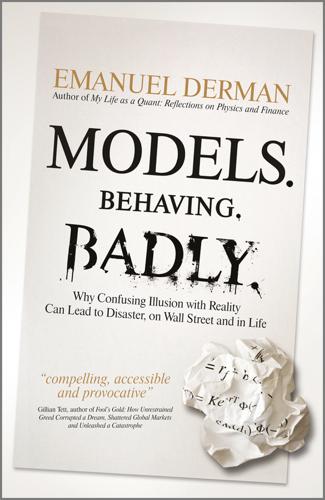
Models. Behaving. Badly.: Why Confusing Illusion With Reality Can Lead to Disaster, on Wall Street and in Life
by
Emanuel Derman
Published 13 Oct 2011
When we compare it with almost everything else in economics, the wonderful thing about this law of valuation by analogy is that it dispenses with utility functions, the undiscoverable hidden variables whose ghostly presence permeates economic theory. Financial economists like to recast the Law of One Price as the more pedantically named Principle of No Riskless Arbitrage: Any two securities with identical future payoffs, no matter how the future turns out, should have identical current prices. This Law of One Price embodies the common sense that the author of “the fundamental theorem of finance” was trying so hard to convey but expressed so unclearly. In the imaginary world of the Efficient Market Model, a stock’s price movements are completely characterized by its expected return μ and its volatility a.
…
See also Black-Scholes Model metaphor(s): as analogies definition/nature of models and electromagnetic theory as facts confused with feelings as financial models as God and hierarchy of linguistic and irreducible nonmetaphor language as tower of limitations of mysteries of world and physical basis of positron and purposes of of Schopenhauer symbols and theories and method: Goethe’s view about content and mind: body relationship with composition of world and domino computer and idea and invention/ discovery as synthesis of world and laws of materialism and Spinoza’s emotions theory and will and Minsky, Marvin miscegenation mnemonics Modeh (children’s prayer) Model T Modelers’ Hippocratic Oath models: accuracy of analogies and assumptions and benefits of as caricature as collection of parallel thought universes definition of explanations required for as fetish as gedankenexperiments good and bad ideal language and laws and limitations/inadequacies of and making the unconscious conscious as metaphor mysteries of world and nature of purposes of for risk rules for using as saving mental labor as simplifications theorems and theories compared with time and types of unreliability of validity of verification of vulgarity of as way of understanding world See also failed models; specific model or topic money See also currency/cash monocular diplopia Montagu, South Africa: Derman visit to morals: markets and mortgages Moses: burning bush and Mossin, Jan moth in refrigerator example motion, laws of Mottelson, Ben mudita, Nabokov, Vladimir National Union of South African Students (Nusas) Nationalist Party, Afrikaner nature: inner relationships of negative energy Newton, Isaac: as a bird calculus and CAPM and and Derman’s question about laws and explanations discoveries about matter of electromagnetic theory and Keynes’s views about laws of laws of the universe and mechanics theory of and perfection via intuition and right way to use models theories of observation Oersted, Hans Christian “On the Suffering of the World” (Schopenhauer) options: benefits of financial models and Black-Scholes Model and Merton and as objects of interest to financial models Spinoza’s theory of emotions and valuing of vulgarity of financial models and pain: definition of money and Spinoza’s emotions theory and Palestine parity violation passions perfection: definition of electromagnetic theory and God as intuition and knowledge and levels of nonexistence of reality and Spinoza’s definition of Spinoza’s emotions theory and of theories phenomena: electromagnetic theory and importance of physics: abstractions and analytic continuation in birds and frogs in collective model in nuclear Derman’s interest in studying equilibrium in failed models in financial models and function of fundamental theorem of God and good and bad models and theories in laws of and making the unconscious conscious mathematics and Maxwell’s impact on nature of models and negative energy and purpose of models in and right way to use models theory as distinguished from models and uncertainty and values of fundamental constants in world as focus of See also specific scientist, model, or theory “A Piece of Chalk” (Chesterton) The Pirates of Penzance (Gilbert and Sullivan) Planck, Max pleasure: definition of as derivative of love expected financial models and generalized intuition and localized money and perfection and Spinoza’s emotions theory and pleasure premium Poalei Zion (Workers of Zion) Poincaré, Henri points politics: failed models in financial models and human affairs and Population Registration Act (1950) portfolios, investment Portnoy’s Complaint (Roth) positrons postulates Powers, Melvin pragmamorphism “The Precision of Pain and the Blurriness of Joy” (Amichai) preconceptions prediction: financial models and purpose of models in physics and presence: absence as price: definition of drift in financial models and fluctuation in futility of using financial models and history of implied opaque prediction of future purpose of finance models and risk model and value and volatility of See also Law of One Price; specific financial model or theory primes primitives See also specific primitive Principle of No Riskless Arbitrage. See Law of One Price principles: definition of theories and Euclid’s geometry and in finance privatization probability Prohibition of Mixed Marriages Act (1949) proxies: artists’ models as psyche, Freud’s theory of psychoanalysis psychology Pygmalion model Pythagoras’s theorem QED.
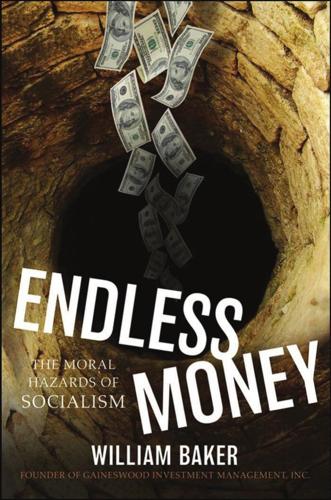
Endless Money: The Moral Hazards of Socialism
by
William Baker
and
Addison Wiggin
Published 2 Nov 2009
One in particular, Harry Marcopolos, took it upon himself to pen a 19-page examination of Madoff complete with a recitation of no less than 29 “red flags,” which he presented seemingly on a silver platter to SEC officials titled, The World’s Largest Hedge Fund is a Fraud.12 Marcopolos is a derivatives expert, having traded portfolios in the billions of dollars in various options strategies for hedge funds and institutional clients. The general thesis Marcopolos advances is that for Madoff to have outdone the returns the market permits for riskless arbitrage, he would have had to deviate from it and consistently made bets that were winners for nearly 200 months, consecutively. (Madoff had seven months in which he claimed losses of less than 1 percent.) Zeroing in on periods of time when the market was pricing options such that riskless arbitrage was essentially inoperable, such as the Asian currency crisis, he concluded the likelihood of Madoff not having suffered more than a few skin lacerations is statistically almost impossible.
…
While selection of and access to funds with high returns is a key determinant of the success of funds of funds, an equally large selling point for them is usually their procedures for due diligence (how well they kick the tires). The most amazing part of the Madoff affair is that experienced hands in the industry which practiced the investment strategy Mr. Madoff Wings of Wax 25 professed to employ, an options trading technique long known as “riskless arbitrage,” loudly proclaimed that it was impossible to produce a track record with it akin to what Madoff reported to his investors. When practiced in its purest form, it involves buying and selling calls, puts, and an underlying equity such that risk of price movement is hedged away. Under these circumstances the market has long offered essentially Treasury bill type returns, because arbitrage has narrowed spreads since at least the 1970s.
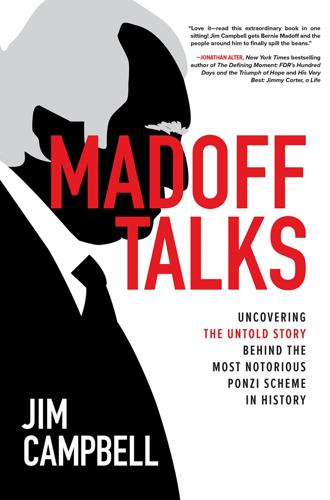
Madoff Talks: Uncovering the Untold Story Behind the Most Notorious Ponzi Scheme in History
by
Jim Campbell
Published 26 Apr 2021
At this time all arbitrage was handled by these people and was performed strictly for their firms’ account, meaning no retail business. These same individuals did not want to be bothered with trading small amounts of bonds, known as odd lots, or orders of less than 100 shares. I said I would take all their referrals.”7 Madoff was engaging in “riskless arbitrage”—buying convertible bonds while simultaneously selling the stocks that the bonds were convertible into, earning a small and generally riskless spread on momentary pricing inefficiencies. His insight: the speed of the conversion was critical. At the time, the settlement process went through a conversion agent, adding a layer of complexity and delay.
…
.; Madoff, Peter; Madoff, Ruth Alpern) Madoff Technologies LLC, 196 “Madoff Tops Charts; Skeptics Ask How” (Ocrant), 114 Madoff Victims Coalition, 181, 208 Manning Rule, 43–44 Manzke, Sandra, 192 MARHedge, 114, 120 Market bias, 118–119 Market-making and proprietary business (MM&PT), xix, 9, 82, 144–146, 233 Markopolos, Harry, xvi–xviii, 103, 109, 111, 112f, 113–114, 117–119, 121, 122, 124–126, 129–131, 153, 157, 160, 165, 204, 278–281, 291, 293 “May Day,” 33 Maya, Isaac, 87 McGraw Hill, 218 McKenna, Lawrence, 179 McMahon, Robert, 83, 91, 221 “Merc” (New York Mercantile Exchange), 119 Merkin, Ezra, xvii, 22, 161–162, 168 Merrill Lynch, 33, 45, 52, 121, 128, 280 Mitterrand, François, 58 MM&PT (see Market-making and proprietary business) Money laundering, 144–147, 151, 290–292 Montauk, Long Island, 20, 25 Morgan Stanley, 45, 75, 144, 145, 233, 273 MSIL (Madoff Securities International Limited), 20, 146 Mukasey, Marc, 17, 19–20, 80–82 Mukasey, Michael, 80 Municipal bonds, 64 Muntner, Sylvia, 30, 254 Naked options (naked shorts), 60, 125, 158, 160 NASD (see National Association of Securities Dealers) NASDAQ (National Association of Securities Dealers Automated Quotation System), 29, 32, 46, 117, 121, 131, 209, 252, 280, 293 Nasi, William, 88 National Association of Securities Dealers (NASD), 46, 52, 66, 108, 109, 134, 135, 137, 286 (See also Financial Industry Regulatory Authority [FINRA]; NASDAQ) National Securities Clearing Corporation (NSCC), 108 Nee, John, 133 NERO (Northeast Regional Office) (SEC), 113–115 Net Investment Method (NIM), 185–187 Net losers, 180 Net winners, 180 New Age Funds, 184 New Deal, 282 New Jersey, 203 New Times Securities Services, Inc., 184 New York City Ballet, 55 New York Mercantile Exchange (NYMEX, “Merc”), 119 New York Mets, 166–168, 197 New York Post, 239 New York State, 203, 220, 266 (See also Southern District of New York [SDNY]) New York State Attorney General, 44 New York Stock Exchange (NYSE), xxiv, 29, 31–33, 37, 39, 45, 46, 118, 134, 267 New York Times, xx NIM (Net Investment Method), 185–187 Noel, Alix, 156 Noel, Ariane, 156 Noel, Corina, 156 Noel, Lisina, 156 Noel, Marisa, 156 Noel, Monica, 156 Noel, Walter, 156, 168 Northeast Regional Office (NERO) (SEC), 113–115 NSCC (National Securities Clearing Corporation), 108 NYMEX (New York Mercantile Exchange), 119 NYSE (see New York Stock Exchange) OCC (see Options Clearing Corporation) Ocrant, Michael, 114, 120–121, 130, 263, 287 Office of Economic Analysis (OEA), 109 Office of Market Intelligence (OMI), 280 Office of the Whistleblower (SEC), 280, 281 Ogilvy and Mather, 189 O’Hara, Jerome “Jerry,” 82, 90–91, 94–95, 148, 152 Old Greenwich, Conn., xxi, 238–239 Oldenburg, Claes, 269 Optimal (hedge fund), 14, 16, 23 Options Clearing Corporation (OCC), 104, 108, 155 Ostrow, William, 129–134 Palm Beach, Fla., 12–13, 20, 23, 25, 156, 167 Palm Beach Country Club, xvii, 13, 20, 57 Paris, France, 20 Paulson, Hank, 181–182 Pension plans, 98 Perelman, Ron, 161 Perez, George, 82, 91, 94–96, 95f, 148, 152 Personal expenses, payment of, 245–246, 245f Pettitt, Brian, 22 PharmaSciences, 55 Phelan, John, 33, 37 Picard, Irving, xx, xxvi appointment of, 179 billing rate of, 142 BLM on, 167, 168, 194, 201–202, 236 in BLMIS offices, 152 and BLMIS “piggy bank,” 245–247 and Stanley Chais, 194–196 and Sonja Cohn, 161 fees received by, 47, 180, 184, 284–285 and JPMorgan Chase, 168 Andrew Madoff on, 241 Ruth Madoff sued by, 188, 234–235 and Ezra Merkin, 162 mission of, as Trustee, 179 perception of, as bully, 210 Ponzi scheme victims sued by, 189–190 recovery rate of, 180, 185 resilience of, 286 successes of, 190–193 tax fraud ignored by, 290 team of, 197–200 Picower, Barbara, 55, 56, 98 Picower, Emily, 55 Picower, Jeffry, xxiv, 51, 53–57, 60, 62–64, 85, 97–100, 142, 190–191, 193–196, 200, 201, 260, 269, 273, 274, 289–290 Picower Foundation, 55 Picower Institute for Medical Research, 55 Piedrahita, Andrés, 156 Pink sheets, 32 P&Ls (see Profit and loss reports) Pomerantz, Steven, 163–166, 256 Ponzi schemes, xvii, xxiv, 184 Pottruck, David, 21 Price Waterhouse (PW), 66, 110, 193, 277 Prime brokerages, 122 Pritzker family, 273 Private placement memoranda (PPMs), 157 Profit and loss reports (P&Ls), 44–45, 82, 146–147, 231–232 Promissory notes, 62 “PRT62V” programs, 93 Put options, 72 Putnam, 184 PW (see Price Waterhouse) QUANT hedge fund, 75–76 Quants, 41, 163 Queens College, 238 Rampart Investment Management, xv–xvii, 117–118, 120, 123, 126, 291 Random number generators, 92 RBS (Royal Bank of Scotland), 107 Reagan, Ronald, 274–275 Regulatory reform, need for systemic, 277–278 Regulatory reports, falsified, 150–151 Renaissance Technologies, 75, 115–116 Riopelle, Roland, 86, 88, 99, 262–263, 290 Riordan, Erin, 152 “Riskless arbitrage,” 35–36 Roberts, Paul, xix, 12, 46–47, 67, 87, 88–89, 94, 96, 98, 141–142, 151–153, 171, 172, 230, 269, 293 Robertson, Julian, 42 Robinhood, 39 Rosa Mexicano restaurant, 6 Rothko, Mark, 162–163 Round Hill Club, 156 RP/EQ, 146, 147, 232 “RuAnn Family Plan,” 87 Rule 2860, 109 Russia, 195, 291–292 San Marino, Calif., 156 Sandell, Laurie, xx SAR (Suspicious Activity Report), 172, 174 Schumer, Chuck, 210 Schwab (see Charles Schwab & Company) Securities and Exchange Commission (SEC), xvii, xviii, xxv and arrest of BLM, 8–10 basic questions not asked by, 103–105 BLM and incompetency of, 222, 293 BLM on respect of, for BLMIS, 36 BLMIS IT specialists and false reporting to, 94–95 BLMIS’s dealings with, 37, 42, 83, 90, 91, 157–159, 221 BLM’s claim to be on “short list” for chairman of, 131 BLM’s parents’ registration with, 243 Boston District Office of, 111, 114 broker-dealer vs. investment-advisory arms of, 105–106 and Stanley Chais, 195 dysfunction at, 137–138 earlier investigations of, 96–97, 277–278 exploitation of incompetence of, by BLM, 105–106 failure of, to detect BLM’s Ponzi scheme, 103–117 falsified reports filed with, 150–151 and FBI, 152 and FINRA, 136, 287 Securities and Exchange Commission (SEC) first exoneration of BLM by, 61–67 “job” of, 129 made-up “rule” of, 88 Harry Markopolos’ complaint to, 111, 113–114, 124 New York Regional Office of, 133, 226 Northeast Regional Office of, 113–115 Office of Economic Analysis of, 109 organizational silos at, 154 oversight needed for, 286 Ponzi scheme victims and failure of, 214 and Rampart Investment Management, 118 real trading never verified by, 103–104, 106–109 reforming the, 278–282 and Robinhood, 39 and SIPC, 181, 187, 283 and Sterling Equities, 166 2005 failed examination by, 129–134 utter failure of, as regulator, 294 whistleblower tips/revelations ignored by, 109–117 Securities Industry Automation Corporation (SIAC), 108 Securities Investor Protection Act (SIPA), 184, 186, 284–286 Securities Investor Protection Corporation (SIPC): and fees charged by Trustees, 184, 185, 188 GAO’s warning to, 278 goalposts moved by, 183–184 inadequate customer protection fund of, xxvi mission of, 142, 179 and Net Investment Method, 185–186 Hank Paulson and, 181–182 “protection” of investors offered by, 179–181 recovery rate of, 180 reforming the, 282–286 settlements made by, 196–197 top ten “bad guys” targeted by, 190–193 (See also Picard, Irving) Self-regulatory organizations (SROs), xxviii, 135, 136, 286 Serious Organised Crime Agency (SOCA), 174, 291 Settlements (made by SIPC), 196–197 “703 account,” xix, 10, 13, 15–16, 18, 23, 25, 78, 82–84, 87–88, 90, 97, 104, 109, 144–146, 152 Shapiro, Carl, 22, 23, 53, 56–57, 59, 64, 87, 97, 191, 193–196, 201, 273 Shapiro, Mary, 280–281 Shapiro, Ruth, 56 Sharpe ratio, 204 Sheehan, David, 185, 197 Shtup file, 94, 149 SIAC (Securities Industry Automation Corporation), 108 Sibley, Lee, 15, 153 Simons, Jim, 75–76, 115–116 SIPA (see Securities Investor Protection Act) SIPC (see Securities Investor Protection Corporation) Smith Barney, 45 SOCA (Serious Organised Crime Agency), 174, 291 Sodi, Marco, 156 Soft Screw (Oldenburg sculpture), 269 Solomon, Elaine, 7 Sorkin, Ira “Ike,” xxiii, 14, 16, 18–19, 61, 63, 193, 223–224, 226, 234, 240–241, 269 Soros, George, 42 Southern District of New York (SDNY), 196, 220, 226, 290 S&P 100 Index, 72, 92, 107, 149, 165, 167, 173 S&P 100 OEX, 77 S&P 500 Index, 33, 97, 284 SPCL programs, 92 Spear, Leeds & Kellogg, 45–46 Specialists, trading, 31 Split strike conversion (SSC) investment strategy, 71–77, 86, 92, 97, 100, 103, 108, 111, 116, 118–119, 132, 148, 149, 155, 157, 158, 162–166, 165f, 191, 202, 228, 257–258, 264, 276 Squillari, Eleanor, xviii–xix, 3–9, 11–13, 21, 23–24, 77, 89, 90, 160–161, 203, 220, 223, 225, 228, 229, 246, 255, 258, 259, 290, 293 Squillari, Sabrina, 24 SROs (see Self-regulatory organizations (SROs)) Stampfli, Josh, 37–41, 43–45, 146–147, 221–222 “STDTRADE” file, 92 Sterling Equities, 166–168 “STMTPro” program, 93 Stock options, 72 Strike price, 72 Structured notes, 118 Suh, Simona, 107–109 Suspicious Activity Report (SAR), 172, 174 Swaps, 121 Switzerland, 291 Synthetic structured products, 172–174 TARP bailout, 182 Tax fraud, 82, 88, 90, 266–267, 289–290 Tax shelters, 53, 54 Teicher, Victor, 162 Thema International Funds, 160, 161, 192 Tibbs, Susan, 109 Toub, Philip Jamchid, 156 “TRADE17” program, 92 “TRADE1701” program, 92 Transparency, trading, 32, 46, 76, 174 Treasury bills (T-bills), 64, 73–74, 98, 118, 119, 164, 173, 174, 206, 273 Treasury bonds, 22, 100, 146, 165 Tremont Fund, 173, 192 Trump administration, 282 Trust, 275–276 Tucker, Jeffrey, 22, 156, 168 Tufts University, xvii UBS (Union Bank of Switzerland), 107 Underwriters, IPO, 52 University of Alabama, 30 University of California, Berkeley, 163 US Congress, 184, 207, 210 US Department of Justice (DOJ), 44, 154, 175, 192, 196, 220, 234 US Department of Labor, 98 US Department of the Treasury, 182, 282 Vanderhonval, Bill, 23 Vanguard, 37, 39, 184 Vanity Fair, 156 Vanity Fair Corporation, 56 Victims of the Ponzi scheme, 203–214 Ambrosino family, 207–211 average age of, 185 BLM’s seeming lack of remorse for, 211–213 and Congress’ failure, 207 and the European banks, 201 Willard Foxton Jr., 207–208 hardship cases, 199–200 Norma Hill, 204, 205f, 206–207 and the IRS, 202–203 Jews as, 204 lesson learned by, 214 recoveries of, 213–214, 274 and SEC’s failure, 214 SIPC and, 179–202 Eleanor Squillari on, 203 Vienna, Austria, 161, 208 Vijayvergiya, Amit, 122, 159 Villehuchet, René-Thierry Magon de La, xv–xvii, 21, 119, 125, 155, 270 Volume Weighted Average Price (VWAP), 36, 148 Walker, Genevievette, 115 Walker, Richard, 110 Wall Street Journal, 45, 63 Walmart, 210 Ward, Grant, 113 Waters, Maxine, 210 Weinstein, Sheryl, 255–256 Weiss, Paul, 226 West, Deborah, 196 Wharton School of Business, 81, 221 Whistleblowers and others suspecting misconduct, 109–124 A&B feeder fund tip (1992), 110–111 anonymous informants (Oct. 2005), 116 Frank Casey, 103, 123–129 Neil Chelo, 122 “concerned citizen” (Dec. 2006), 116–117 hedge fund whistleblower (May 2003), 114–115 Harry Markopolos, 111–114, 117–119, 124–126 Ocrant and Arvedlund articles, 120–121 Renaissance Technologies internal emails (Apr. 2004), 115–116 Wilpon, Fred, 163, 166–168, 197 The Wizard of Lies (Henriques), 60 Yang, Chan, 173 Yelsey, Neil, 45, 147, 231 Yeshiva University, 161 Zames, Matt, 172–173 ABOUT THE AUTHOR Jim Campbell is the host of the nationally syndicated radio show Business Talk with Jim Campbell and his crime show: Forensic Talk with Jim Campbell.

Mathematics for Economics and Finance
by
Michael Harrison
and
Patrick Waldron
Published 19 Apr 2011
We already know from (1.12.4) that V must be positive semi-definite, but we require this slightly stronger condition. To see why, suppose ∃w 6= 0N s.t. w> Vw = 0 (6.4.6) Then ∃ a portfolio whose return w> r̃ = r̃w has zero variance. This implies that r̃w = r0 (say) w.p.1 or, essentially, that this portfolio is riskless. Arbitrage will force the returns on all riskless assets to be equal in equilibrium, so this situation is equivalent economically to the introduction of a riskless asset later. In the portfolio problem, the place of the matrix A in the canonical quadratic programming problem is taken by the (symmetric) negative definite matrix, −V, which is just the negative of the variance-covariance matrix of asset returns; g1 = 1> and α1 = W0 ; and g2 = e> and α2 = W1 . (6.4.5) guarantees that the 2 × N matrix G is of full rank 2.

Investing Amid Low Expected Returns: Making the Most When Markets Offer the Least
by
Antti Ilmanen
Published 24 Feb 2022
Arbitrage strategies such as merger arbitrage (buy the target and sell the acquirer upon a merger announcement when the natural investor flow goes the other way), convertible arbitrage (buy convertible bonds at issuance and hedge their key risks), and fixed-income arbitrage (e.g. buy the less liquid off-the-run bond against the popular liquid on-the-run bond). None of these involve truly riskless arbitrage. Other “event” regularities such as index rebalancing (S&P500/Russell/MSCI index additions and deletions), government bond auctions, price pressures with “fallen angels” in credits, or futures rolls (GSCI monthly roll to new contract). Long/short strategies favoring the back contracts in many futures where most market participants prefer to be long the most liquid front contact.
…
See also Naive Trading costs; Trading costs average market impact cost estimates, 229f minimization, 228f Covid-19 crisis, impact, 22, 73 Cowles data value, usage, 111 Credit carry strategy, 130 Credit excess return, 76f Credit market size, 75 Credit performance statistics, 78t Credit premium (premia), 74–81 Credit strategies, 125 Cross-country returns, 245 Cross-sectional approaches, time-series approaches (contrast), 182 Cross-sectional momentum, 117, 118, 182 Cross-sectional stock selection strategies, application, 121 Crowding concerns, 158–160 Cube, The, 197f Cumulative excess returns, 71f, 82f Cumulative return, 129f Currency carry, 125–126 Currency-hedged investor, function, 55 Cyclically-adjusted earnings yield (CAEY), 18, 59–60 aggregate measure, 113 averages, comparison, 65 judgement, in-sample signals (usage), 236 level, reduction, 68 quintile buckets, 238f scatter plot/time series, 237f usage, 174, 236 D Data mining, usage, 170–171 Defensive factor, 153 Defensive stock selection, low beta/quality basis, 132–133 Defensive strategies, 131–137 Defensive US equity strategies, performance, 135f Defined-benefit (DB) pension plan (D-B plans), 28–30 glide paths, adoption/changes, 32, 32f low expected return challenge, impact, 42–43 US public/corporate DB pensions, A-B evolving asset allocation, 38f Defined contribution (DC) pension, 16, 28 Defined contribution (DC) savers, low expected return challenge (impact), 44–45 di Bartolomeo, Dan, 160 Dilution effects, variation, 64 Dimson, Elroy, 36 Directional commodity index trading, 83 Direct real estate, listed real estate (comparison), 95 Discounting, 164, 170 Discount rate effect, 17–21, 17f Discretionary investing, systematic investing (contrast), 142b Disinflation, secular developments, 71 Disposition effect, 167 Diversification, 187–189, 191–194 A-B value, 190f usage, 191f Dividend discount model (DDM), 59, 174 Dividends-base Gordon model, 174 Dividends per share (DPS), 59, 60, 64–65 Dividend yield-based stock selection strategy, 130 Dividend yield differential, 127–128 Downward-sloping glide path, justification, 30–31 Dragon risk, 196 Drawdown control rules, 209–210 Dry powder, absorption challenge symptom, 100 Dynamic risk control strategies, 209–210 E Earnings per share (EPS), 59–62 Economic rationale, global change (impact), 169 Economic recessions (bad times measure), 154 Ellis, Charley, 36 Emerging market bonds, growth, 75 Empirical evidence, usage, 170–171 Employee satisfaction, evidence, 223 Endowment Model (Yale Model), 13, 37, 41 Endowments, 29, 45 Environmental, Social, and Governance (ESG) investing, 11, 26, 42, 205, 219–223 considerations, 6 ESG-Sharpe ratio frontier, stylized example, 222f framework, 220f preferences, 196 strategies, 168 themes, examples, 223t Equations, usage, 173–180 Equilibrium real yields/growth, comparison, 21 Equities beta, 101 bonds, shift, 35–36 contrarian timing, 240–242 equity-bond allocation, optimization, 201f equity-like risk-taking, 47 housing, performance comparison, 90–93 market beta, A-B scatterplot multi-asset average return, 154f money management process, 40 returns, GDP growth (weak empirical relationship), 67b valuation, level, 68 Equity allocation (stylized glide path), 30f, 32f Equity market, 168 correlations, evolution, 130f decline (bad times measure), 154 empirically decomposed equity market return, 66t ownership shares, evolution, 35f strategy Sharpe Ratios, predictor basis, 241f tail performance, 123f Equity premia, 55–69, 58f Estimation errors (MVO), 204–206 Excess returns, 9f, 70–71, 71f, 81, 82f Exchange-traded funds (ETFs), 34, 40, 83, 141 Exotic beta, 106 Expected real return (60/40 stock/bond portfolio), 19f Expected real return/expected inflation, US cash rate split, 54f Expected return, 62–64, 176, 197, 235 Expected Returns (Ilmanen), 10, 12, 75 Extrapolative strategies, 117–124 Ezra, Don, 36 F Factor, 8, 107 coefficients, 182 diversification/timing, usage, 242f factor-based investing, 47 momentum, 122 Fallen angels, 79–80, 102 Falling next-decade expectations, 20f Fama, Eugene, 107, 109, 111, 140, 152, 176, 178 Fama-French factor models, 140 Fama-MacBeth factor-mimicking portfolios, 183 Fear of missing out (FOMO), 246 Fees, 96, 225, 230–232 Five-factor model (Fama/French), 107 Fixed income (FI), 201 funds, positive credit beta tilt, 80 Flow data, understanding, 161b Forward-looking analysis, 65 Forward-looking equity premia (real yields), 59–62 Forward-looking indicators, 96 Forward-looking real equity return, 68f Forward-looking returns, 59 Forward-looking Treasury yields, decomposition, 71–72 French, Kenneth, 99, 107, 109, 111, 114, 140, 176, 230 Front-end opportunities, 80 Fundamental law of active management (FLAM), 178–180, 188, 193 Funding ratio (FR), 28, 31–32, 42 evolution, 43f Future excess returns, 238f G GAAP earnings (replacement), operating earnings (usage), 62 GARCH models, 215 Generic risk premium (1/price effect), 126 Geometric mean (GM), 81–82 Glide paths, adoption/changes, 32, 32f Global asset allocation, contrarian strategies (usage), 114 Global bond yield decline, convergence (relationship), 23f Global equities average compound/premia, 57f cumulative excess returns, comparison, 71f diversification, home bias (contrast), 188 drawdowns, 155 Global Financial Crisis (GFC), 4, 21, 38, 208 buyout index, drawdown, 99 volatility, 124 Global government bonds/global equities, cumulative excess returns (comparison), 71f Globalization, disinflationary impact, 53 Global Japanification, 21 Global market portfolio, 39b–40b Goetzmann, Will, 111 Gold, examination/history, 83, 85f Goobey, Ross, 36 Gordon growth model, 59, 62 Governance, problems, 248 Government bond index returns, 75 Gradualism, usage, 169 Great Depression, 36, 58, 208 Great Inflation, 53 Grinold, Richard, 178 Gross domestic product (GDP), 67b, 154 GSCI index, 83 H Hedge fund index cumulative excess return over cash, 144f Hedge funds, 144, 144f, 146f, 147, 149 industry excess-of-cash return, decomposition, 148t High yield (HY) bonds, 74, 76 High yield (HY) corporate bonds, characteristics, 76–77 High-yield default rates, 79f High yield (HY) market, OAS, 77 Historical average, 56 excess returns, 75–77, 81–83 return, 180 Historical bond yields, excess returns (relationship), 70–71 Historical equity premium, 56–59 Historical realized premium, 56 Historical returns, sources (understanding), 65 Home bias global equity diversification, contrast, 188 reduction, 37 Horizon, 165f, 181–182 Housel, Morgan, 248 Housing, 90–93 NCREIF commercial real estate index, real return (decomposition), 100f US housing, arithmetic mean returns (decomposition), 92f I Idiosyncratic momentum, 121 Idiosyncratic security risk, diversification, 109 Idiosyncratic volatility factor (IVOL), 134, 136 Illiquid alternatives, 36–37, 88–101, 203 Illiquid assets, 24 class, performance/risk statistics, 91t global wealth share, 89b–90b premia, 156 Illiquidity premia, 87, 95, 101, 146–147 correlations, 108t smoothing service, impact, 98–99, 99f Illiquidity proxy, A-D scatterplot multi-asset Sharpe ratio, 156f Impatience, 164–167 Incomes, equations, 174–175 Income strategies, 124–131 Index funds, market share loss, 40 Individual pension saver, 28 Inflation, 54 average inflation, real cash return (relationship), 53f GFC, impact, 21 hedging premium, 83, 85–86 increase, 215, 250 inflation-indexed government bonds, liquidity, 101–102 sensitivities, 85f Information ratio (IR), 80 Informed traders, 102 In-sample signals, usage, 236 Institutional investors asset management fees, estimates, 231f procyclicality, 246 Intangibles, B/P ratio, 112–113 Interest rate risk, 101 Internal rates of return, basis, 89, 99 Intertemporal CAPM, 176 Inverted Shiller CAPE, 174 Investable global market, history, 38 Investable indices, absence, 9 Investable, limit (broadening), 38 Investing, 34, 42, 47, 168, 243 active investing, passive investing (contrast), 140–142 principles, 250–251 superstars, examination, 147, 149, 149f systematic investing, discretionary investing (contrast), 142b Investment, 6–8, 11–15 models, taxonomy, 41f opportunities, 83, 247t problem/solution, identification, 30–31 returns, decadal perspective, 24–26 risk, management techniques, 209–210 success, forecasting skills (impact), 206 Investment-grade (IG) bonds, 74, 79 Investors, 27–33, 42–45 institutional investors, asset management fees (estimates), 231f low expected returns, impact, 249–250 patience, enhancement process, 167–169 portfolio construction process, 177–178 returns demand, 175–177 risk level, determination, 249–250 trading costs, differences, 226 value, addition process, 178–180 Irrational mispricing, rational reward, 152–153 K Kahneman, Daniel, 164 Kelly criterion, 216 Keynes, John Maynard, 99 L Large US endowments, asset allocation (evolution), 35f Last-decade performance, flatness, 119 Law of small numbers, 164–165 Leibowitz, Marty, 12, 36 Leverage, 156, 197 Leveraged buyout funds, impact, 95–96 Leverage risk management, 210 Liability matching, 206 long-duration bonds, demand, 73–74 Lifecycle investing, theories, 30 Line-item thinking, 168 Liquid alternatives, 106 Liquid ARP, 201 Liquid asset class, 118 premia, 51, 156 Liquid assets, 24, 156 Liquidity, 101, 102 Liquidity risk premium proxy, 101 Liquid public assets, 101–102 Listed real estate, direct real estate (comparison), 95 Long horizons, 181–182, 197 return, 236–237 Long-run return sources, 151–153 conviction/patiences, sustaining, 163 pyramid, 52f Long/short alternative risk premia variants, 8 Long-short value strategy, risks/pitfalls, 114–115 Long-shot bias, 136 Long/shot sides, valuation, 116f Long-term corporat bond returns, 75 Long-term per-share dividend/earnings growth, lag, 63 Long-term reversal patterns, 158f Lottery preferences, 156 Low expected return challenge, 15, 42–45 institutional answers, 47f investor responses, 27, 45–47 storyline, change, 79–80 Low expected returns, 15, 17–21 impact, 249–250 Serenity Prayer, relationship, 3–6 Low-for-longer policy rates, 55 Low-risk strategies, 131–137 LTREV Factors, 114 M Machine learning, 170, 183b–184b Macroeconomic exposures, 197–198, 200 Macroeconomic sensitivities, 199f Madoff, Bernie (returns), 167 Manager-specific alpha, 9 Market, 40 inefficiency, 143 liquidity, 87 moves, expectations, 126 risk, management, 214–216 yields, anchor, 19 Market beta, 231 exposures, problems, 114–115 Market risk premia (MRP), 146 Mark-to-market pricing, 89, 98 Marshmallow tests, 164 Maverick risk, 194, 210 Max expected utility, equation, 177 Mean reversion, appearance, 19 Mean-variance optimization (MVO), 177–178, 200–206 Medium-term expected returns, tactical timing, 235 Model errors (MVO), 204 Modern Portfolio Theory (MPT), 36, 202b Momentum equity market trail performance, 123f extrapolative strategy, 117–124 monthly/quarterly momentum, 158f opportunities, 247 patterns, 245f style premia, per-decade/century-long SRs, 122f US momentum-based stock selection strategies, cumulative performance, 119f Money losses, 158–160 management process, 40–42 Multi-asset portfolio, variation, 190 Multidimensionality, meaning, 88 Multi-factor strategies, trading (increase), 227 Multi-metric composite, 112 Multiyear procyclic investor flows/mean-reverting returns (connection), 167 Multiyear return chasing, 244–246 Mutual funds, 34, 41f N NCREIF commercial real estate index, real return (decomposition), 100f Net dilution, 64 Net rental yields, overstatement, 93 Net return, maximization, 228f Net total payout yield, components, 64f Net total yield (NTY), 63 Next-decades excess returns, scatter plot/time series, 237f NIPA profits, usage, 240 Non-investment-grade bonds, 74 Non-profit-seeking market participants, presence, 126 Non-standard preferences, 157 Normal backwardation, 86 Normal cash rate, perception, 52 Norway Model, 13, 40, 41 Notional diversification, impact, 188 O Objective long-run return expectations, 61f Off-the-run bond, 102 One-factor alphas, measurement, 140 On-the-run bond, 102 OOS forecasts, 239 Optimal portfolios, information (variation), 205t Option-adjusted spread (OAS), 77 Organizational commitment, increase, 168 Outcome bias, Serenity Prayer (contrast), 5–6 Out-of-the-money (OTM) index, 212 short-dated deep-OTM index, rolling, 213 Overdiversification/diworsification, danger, 193 Overtrading, 243 P Passive investing, active investing (contrast), 140–141 Passive money management, 40 Path-dependence, role, 43 Patience adversity, conviction (sustaining), 164–169 impatience, causes, 164–166 investor patience, enhancement process, 167–169 problems, 167 sustaining, 163 Pension fund balance sheet, terminology, 28–29 Pension plans, problems, 46 Per-decade equity premia, 57–58, 58f Performance metrics, IRR basis, 89 Peso problem, 167 Portfolios, 197f carbon emissions measure, 224 choice, risky assets (impact), 203f construction, 187, 195–196 insurance strategies, 209–210 investor construction, 177–178 macroeconomic exposures, 197–198, 200 optimal portfolios, information (variation), 205t portfolio-level MVO, usage, 201–203 rebalancing strategies, 114 return/risk assumptions, 201t return sources, classification, 146–147 review, broadness/infrequency, 168 top-down decisions, 195–200 total portfolio, illiquid share, 196–197 volatility, 214–216 Predictive techniques, 173, 180–183 Price-scaled predictors, usage, 240 Private assets, 88–101 classes, valuation/expected return data (absence), 101 performance, 99–100 Private credit, 75, 88 Private equity (PE) A-B ex-post/ex-ante edge (weakening), 97f burnout, returns, 95–96, 98 funds, returns (earning), 232 illiquid alternative asset class, 88 managers, fee pressure, 96 Private market returns, IRR basis, 90 Probability distribution, reshaping, 209 Proprietary alpha, 51, 140 Prospect theory (Kahneman-Tversky), 157 Prudent Man Rule, 36 Public flows, importance, 162 Public pension plans, impact, 46 Pure alpha, 232 Put strategies, trend strategies (contrast), 210–213 Q Quality-adjusted house price appreciation, 93 Quality-minus-junk (QMJ), 132, 134, 136 performance, 134f Quality strategies, 131–137 R Radical Uncertainty (Kay-King), 216 Rational risk premia, 155–158 Real asset returns, 100 Real cash rates, 53, 55 Real cash return, average inflation (relationship), 53f Real estate illiquid alternative asset class, 88 returns, 94 Real estate investment trusts (REITs), 95 Real income growth, 94 Realized asset class return, decadal perspective, 25f Realized asset return, windfall gains, 17f Realized nominal returns, 46 Realized real return (60/40 stock/bond portfolio), 19f Real short rates, gold price history (relationship), 85f Real yields (forward-looking equity premia), 59–62 Rearview-mirror expectations, 17–21 Rebalancing, 114, 192 Regression, 180, 182–183 Replacement rate (75%), annual savings rate (requirement), 44f Responsible investing, framework, 220f Rethinking the Equity Risk Premium (Ilmanen), 56 Retirement, savings (calculation), 30 Returns active returns, alpha (relationship), 139–146 constant-varying expected returns, time-varying expected returns (contrast), 180–181 cumulative excess returns, comparison, 71f cumulative return, 129f enhancement, risk management (impact), 216b–217b equation, 174 ESG investing, impact, 221–223 excess returns, historical bond yields (relationship), 70–71 expected real returns, 19f, 54f expected return, equation, 176 fair split, 232–233 future excess returns, 238f generation process, 174–175 historical average excess returns, 75–77 historical performance, 111–112 improvement, 8–9 investor demands, 175–177 medium-term expected returns, tactical timing, 235 multiyear return chasing, 244–246 net return, maximization, 228f private equity (burnout) returns, 95–96, 98 rolling relative return, 166f smooth returns, 167–169 Reversal patterns, 227, 245f Risk, 208–210 adjusted active return, subtraction (equation), 179 aversion, increase, 160 level, investor determination, 249–250 management, 187, 207 perception, 197 rational reward, 152–153 risk-based explanations, 110, 126 risk-mitigating strategies, 213 risk-mitigating strategies, performance, 213t risk-neutral hypotheses, 128 risk-reward trade-off, 45 Risk-adjusted return (information ratio), 80 patience, enhancement, 168–169 Riskless arbitrage, 102 Riskless bonds, yields, 16 Riskless cash return, 52–55, 153–155, 153f Riskless long-term yields, historical perspective, 21–24 Riskless rate, 16 Risk parity 60/40 stock/bond portfolio, contrast, 188–189 investing, 179 Risk premia, 16, 153–158 annual excess returns/Sharpe ratios, 9f bond risk premium, 69–74 generic risk premium (1/price effect), 126 Rolling relative return, 166f Roll, Richard, 178 S Safe assets, demand, 73–74 Samonov, Mikhail, 111 Samuelson's dictum, 145 Saving glut hypothesis, 23 Saving/investment plan, setup, 29 Scheidel, Walter, 154 Seasonal strategies, 103 Secular low expected return, challenge, 15 Selection biases, 170, 223 Serenity Prayer, 3–6 Sharpe ratio (SR), 9f, 120f, 133 A-D scatterplot multi-asset Sharpe ratio, 156f ESG-Sharpe ratio frontier, stylized example, 222f increase, 120, 191f, 242f long-run Sharpe ratios, 112t predictor basis, 241f underperformance, frequency, 165f Sharpe, William, 175 Short horizons equity, 241 long horizons, contrast, 181–182 Short-selling constraints, 152 Short-term bill yields, history, 70, 70f Short-term reversal, 117 Simple expected real return, 7f Size premium, 107b Skew, A-D scatterplot multi-asset Sharpe ratio, 156f Skewness preferences, 155 Slippage, 228 Small numbers, law, 164–165 Smart beta factor investing, 8 Smart money, 121 Smoothing service, impact, 98–99, 99f Smoothness preference, 99 Smooth returns, 167–169 Soros, George (examination), 149f Sorting methods, regression methods (contrast), 182–183 Sovereign wealth fund, perception, 33 Stable-minus-risky (SMR) factor, 134, 136 Stable-minus-risky market-neutral (SMRMN), 134, 136 Standard & Poor's 500 (S&P500) Berkshire Hathway, rolling relative return (contrast), 166f returns, 24, 76 St.
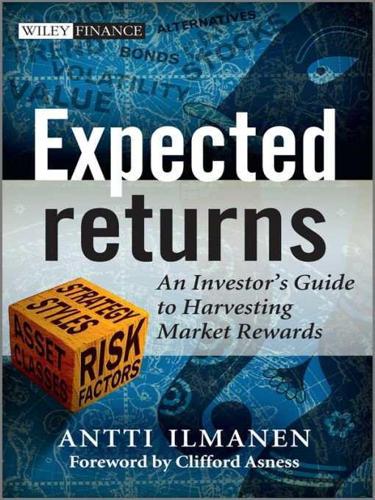
Expected Returns: An Investor's Guide to Harvesting Market Rewards
by
Antti Ilmanen
Published 4 Apr 2011
Arbitrage is possible because assets are “not unique works of art” but have close counterparts in other assets or mixes of other assets (Scholes, 1972). If there are perfect substitutes and frictionless markets, buying a highexpected-return asset while selling a substitute with a lower expected return constitutes a riskless arbitrage. Subsequent empirical studies disputed the notion that perfect substitutes exist. Demand effects may play a key role in explaining time-varying risk premia, given the lack of substitutes for market risk exposures. Even the substitutability of single stocks can be challenged. A key example is the S&P 500 inclusion effect—the finding that new entries to the S&P 500 index experience a sudden and persistent price jump, presumably due to new buying pressure from index funds.
…
Bearish expectations, elevated risk, and risk aversion do not alone explain the distressed price levels of securitized bonds and other assets. Many financial intermediaries and investors became forced sellers as market frictions prevented them and other investors from taking advantage of good deals or nearly riskless arbitrage opportunities. Opportunities that appeared compelling over the long horizon could not be taken due to the possibility that further de-levering and related mark-to-market volatility would make the investment positions unsustainable over the short run. A diverse literature on market frictions explains why asset prices might deviate from fair values or respond sluggishly to new information.
…
Cross-sectional trading strategies may be relatively value-oriented (buy low, sell high) or momentum-oriented (buy rising stocks, sell falling ones; essentially buy high, sell low)—and they may be applied within one market (say, equities) or across many asset markets. Micro-inefficiency refers to either the rare extreme case of riskless arbitrage opportunities or the more plausible case of risky trades and strategies with attractive reward-to-risk ratios. Cross-sectional opportunities are safer to exploit than market-directional opportunities—one can hedge away directional risk and diversify specific risk much more effectively. The value effect refers to the pattern that “value stocks”, those with low valuation ratios (low price/earnings, price/cash flow, price/sales, price/dividend, and price/book value ratios) tend to offer higher long-run average returns than “growth stocks” or “glamour stocks” with high valuation ratios.
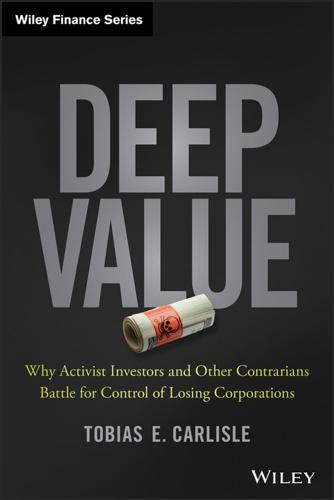
Deep Value
by
Tobias E. Carlisle
Published 19 Aug 2014
Icahn and Kingsley bought the units of the closed-end funds trading at the widest discount from their underlying asset value, and then hedged out the market risk by shorting the securities that made up the mutual fund’s portfolio. Like the convertible arbitrage strategy, the closed-end fund arbitrage was indifferent to the direction of the market, generating profits as the gap between the unit price and the underlying value narrowed. It was not, however, classic riskless arbitrage. As it was possible for a gap to open up between the price of the mutual fund unit and the underlying value of the portfolio, it was also possible for that gap to widen. When it did so, an investor who had bought the units of the fund and sold short the underlying portfolio endured short-term, unrealized losses until the market closed the gap.

The Missing Billionaires: A Guide to Better Financial Decisions
by
Victor Haghani
and
James White
Published 27 Aug 2023
Petersburg What we're calling the “perpetuity paradox” is the conundrum facing a person who simultaneously believes there's a small chance that negative interest rates can persist for long periods but would not pay a price anywhere close to the $2,366 expected value of the annuity. One solution to this potential paradox is suggested by the resolution to the St. Petersburg paradox, which we've discussed in Chapter 6. The common thread in both the perpetuity paradox and the St. Petersburg paradox is that the amount someone should be willing to pay is, in the absence of riskless arbitrage, better determined by the Expected Utility rather than the expected value of the outcomes. We find that even at a price of just $51 for the annuity, a typical investor would optimally invest only 0.10% of his or her wealth, even though the price represents a 98% discount to expected value. Buying this annuity is a lot like buying an undervalued lottery ticket, which we explored in Chapter 19.

Manias, Panics and Crashes: A History of Financial Crises, Sixth Edition
by
Kindleberger, Charles P.
and
Robert Z., Aliber
Published 9 Aug 2011
Hence it is useful to assume that investors are rational in the long run and to analyze economic issues on the basis of this assumption. One interpretation of the rationality assumption is that prices in a particular market today must be consistent with the prices one and two months from now and one and two years from now adjusted for the ‘costs of storage’; otherwise there would be a profitable and relatively riskless arbitrage opportunity. Ragnar Nurkse summarized his survey of changes in the values of the French franc and the German mark in the 1920s with the statement that speculation in the currency market had been destabilizing. Milton Friedman asserted that destabilizing speculation cannot occur – or at least is unlikely to persist – because investors that bought as prices were increasing and sold as prices were declining ‘would be buying high and selling low’; because of these losses, they would either go out of business or change their strategy.
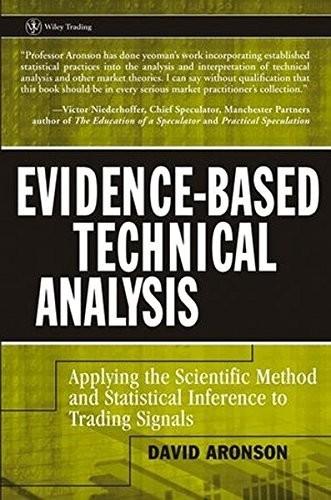
Evidence-Based Technical Analysis: Applying the Scientific Method and Statistical Inference to Trading Signals
by
David Aronson
Published 1 Nov 2006
If one were to employ a bet fraction of 0.58 it is likely all funds would be lost, despite the favorable expectation. This is what happens to an arbitrageur with good information who uses too much leverage. Another constraint on an arbitrage’s ability to enforce efficient pricing is the lack of perfect substitute securities. An ideal (riskless) arbitrage transaction involves the simultaneous purchase and sale of a pair of securities with identical future cash flows and identical risk characteristics. An arbitrage transaction based on securities that do not conform to this ideal necessarily involves risk. And it is risk that limits the degree to which arbitrage activity can force prices to efficient levels.
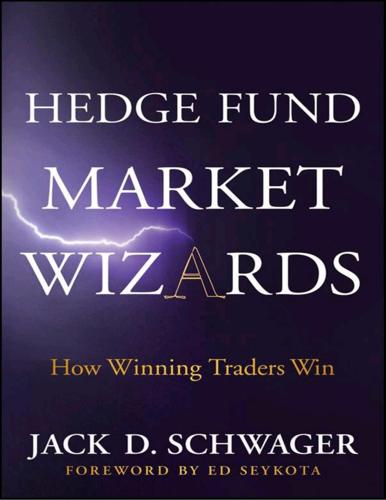
Hedge Fund Market Wizards
by
Jack D. Schwager
Published 24 Apr 2012
It was a good experience managing other people’s money and knowing what that felt like. What was your first investment based job? After my first and only year at law school, I took a summer job trading options at Bear Stearns. Did you know anything about options at that point? No, I ended up doing forward conversions, which are a riskless arbitrage.2 The idea was to put on these arbitrage trades and earn 18 to 19 percent annualized. The option market was that inefficient at the time? No, interest rates were that high at the time. I think the arbitrage added about 5 percent to 6 percent to the risk-free rate. Frankly, the trading was kind of mechanical.

MONEY Master the Game: 7 Simple Steps to Financial Freedom
by
Tony Robbins
Published 18 Nov 2014
CI: I borrowed money to buy a seat on the New York Stock Exchange. I was a hotshot guy. My experience taught me that trading the market is dangerous, and it was far better to use my mathematical ability to become an expert in certain areas. Banks would loan me 90% of the money I needed for arbitrage, because back then, in riskless arbitrage, if you were good, you literally couldn’t lose. And I was starting to make big money, $1.5 to $2 million a year. TR: I’d love to talk to you about asymmetric returns. Were you also looking for those when you began taking over undervalued companies? CI: I started looking at these companies and really analyzing them.